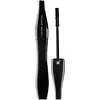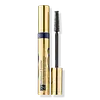What's inside
What's inside
 Key Ingredients
Key Ingredients

 Benefits
Benefits

 Concerns
Concerns

 Ingredients Side-by-side
Ingredients Side-by-side

Water
Skin ConditioningParaffin
PerfumingCera Alba
EmollientStearic Acid
CleansingCopernicia Cerifera Wax
Acacia Senegal Gum
MaskingPalmitic Acid
EmollientTriethanolamine
BufferingPEG-40 Stearate
EmulsifyingSimethicone
EmollientSodium Polymethacrylate
Emulsion StabilisingMyristic Acid
CleansingAminomethyl Propanediol
BufferingHydrogenated Jojoba Oil
AbrasiveHydrogenated Palm Oil
EmollientHydroxyethylcellulose
Emulsion StabilisingPanthenol
Skin ConditioningPolyquaternium-10
BHT
AntioxidantMethylparaben
PreservativePropylparaben
PreservativeCI 75470
Cosmetic ColorantCI 77007
Cosmetic ColorantCI 77288
Cosmetic ColorantCI 77289
Cosmetic ColorantCI 77491
Cosmetic ColorantCI 77492
Cosmetic ColorantCI 77499
Cosmetic ColorantCI 77891
Cosmetic ColorantMica
Cosmetic ColorantWater, Paraffin, Cera Alba, Stearic Acid, Copernicia Cerifera Wax, Acacia Senegal Gum, Palmitic Acid, Triethanolamine, PEG-40 Stearate, Simethicone, Sodium Polymethacrylate, Myristic Acid, Aminomethyl Propanediol, Hydrogenated Jojoba Oil, Hydrogenated Palm Oil, Hydroxyethylcellulose, Panthenol, Polyquaternium-10, BHT, Methylparaben, Propylparaben, CI 75470, CI 77007, CI 77288, CI 77289, CI 77491, CI 77492, CI 77499, CI 77891, Mica
Water
Skin ConditioningStearic Acid
CleansingMyrica Cerifera Fruit Wax
EmollientSucrose Polybehenate
EmollientPolyisobutene
Polyvinyl Acetate
Emulsion StabilisingParaffin
PerfumingAminomethyl Propanediol
BufferingIsostearic Acid
CleansingSilica
AbrasivePanthenol
Skin ConditioningPantethine
EmollientCopernicia Cerifera Wax
Kaolin
AbrasiveHydroxyethylcellulose
Emulsion StabilisingCholesterol
EmollientHydrogenated Olive Oil
Skin ConditioningPtfe
Vp/Eicosene Copolymer
Olea Europaea Fruit Oil
MaskingOlea Europaea Oil Unsaponifiables
Skin ConditioningSodium Polyacrylate
AbsorbentRosmarinus Officinalis Leaf Extract
AntimicrobialSimethicone
EmollientPolyester-5
Pvp
Emulsion StabilisingCaprylyl Glycol
EmollientHexylene Glycol
EmulsifyingNylon-6
Laureth-4
EmulsifyingPolyethylene Terephthalate
Nylon-66
Synthetic Fluorphlogopite
Chlorphenesin
AntimicrobialPhenoxyethanol
PreservativeCI 77891
Cosmetic ColorantMica
Cosmetic ColorantCI 77491
Cosmetic ColorantCI 77492
Cosmetic ColorantCI 77499
Cosmetic ColorantCI 77266
Cosmetic ColorantCI 77510
Cosmetic ColorantCI 42090
Cosmetic ColorantCI 77007
Cosmetic ColorantCI 19140
Cosmetic ColorantCI 77163
Cosmetic ColorantCI 75470
Cosmetic ColorantCI 77289
Cosmetic ColorantCI 77288
Cosmetic ColorantWater, Stearic Acid, Myrica Cerifera Fruit Wax, Sucrose Polybehenate, Polyisobutene, Polyvinyl Acetate, Paraffin, Aminomethyl Propanediol, Isostearic Acid, Silica, Panthenol, Pantethine, Copernicia Cerifera Wax, Kaolin, Hydroxyethylcellulose, Cholesterol, Hydrogenated Olive Oil, Ptfe, Vp/Eicosene Copolymer, Olea Europaea Fruit Oil, Olea Europaea Oil Unsaponifiables, Sodium Polyacrylate, Rosmarinus Officinalis Leaf Extract, Simethicone, Polyester-5, Pvp, Caprylyl Glycol, Hexylene Glycol, Nylon-6, Laureth-4, Polyethylene Terephthalate, Nylon-66, Synthetic Fluorphlogopite, Chlorphenesin, Phenoxyethanol, CI 77891, Mica, CI 77491, CI 77492, CI 77499, CI 77266, CI 77510, CI 42090, CI 77007, CI 19140, CI 77163, CI 75470, CI 77289, CI 77288
 Reviews
Reviews

Ingredients Explained
These ingredients are found in both products.
Ingredients higher up in an ingredient list are typically present in a larger amount.
We don't have a description for Aminomethyl Propanediol yet.
Ci 75470 is a bright-red pigment. It is AKA carmine.
Carmine is derived from insects such as the cochineal beetle. This ingredient has been used as a natural dye for over 2000 years.
This pigment is called Ultramarine blue lazurite. It gives a saturated blue color, but can be used to create other colors as well.
According to the manufacturer, it is usually made from kaolin, sodium sulfate, sodium carbonate, sulfur, and charcoal.
Ci 77288 is used to add green pigment to products.
We don't have a description for CI 77289 yet.
Ci 77491 is also hydrated iron III oxide. It's sole purpose is to give a red/pink hue to products.
Iron III oxides are classified as inorganic chemicals for coloring.
Synthetically created Ci 77491 is considered safer than those naturally found. This is because the synthetically created version may contain less impurities. Iron oxides are generally non-toxic and non-allergenic.
Learn more about CI 77491Ci 77492 is also hydrated iron III oxide. It's sole purpose is to give a yellow hue to products.
Iron III oxides are classified as inorganic chemicals for coloring.
Synthetically created Ci 77492 is considered safer than those naturally found. This is because the synthetically created version may contain less impurities. Iron oxides are generally non-toxic and non-allergenic.
Learn more about CI 77492Ci 77499 is also hydrated iron III oxide. It is created from mixing red and black iron oxides. This helps give shades of darkness to a product.
Iron III oxides are classified as inorganic chemicals for coloring.
Ci 77891 is a white pigment from Titanium dioxide. It is naturally found in minerals such as rutile and ilmenite.
It's main function is to add a white color to cosmetics. It can also be mixed with other colors to create different shades.
Ci 77891 is commonly found in sunscreens due to its ability to block UV rays.
Learn more about CI 77891Copernicia Cerifera Wax comes from a palm tree native to Brazil; another name for this ingredient is Carnauba Wax.
This ingredient is used to thicken texture and also leaves behind a film when applied.
Fun fact: This wax has the highest melting point of all natural waxes and low solubility.
Learn more about Copernicia Cerifera WaxHydroxyethylcellulose is used to improve the texture of products. It is created from a chemical reaction involving ethylene oxide and alkali-cellulose. Cellulose is a sugar found in plant cell walls and help give plants structure.
This ingredient helps stabilize products by preventing ingredients from separating. It can also help thicken the texture of a product.
This ingredient can also be found in pill medicines to help our bodies digest other ingredients.
Learn more about HydroxyethylcelluloseMica is a naturally occurring mineral used to add shimmer and color in cosmetics. It can also help improve the texture of a product or give it an opaque, white/silver color.
Serecite is the name for very fine but ragged grains of mica.
This ingredient is often coated with metal oxides like titanium dioxide. Trace amounts of heavy metals may be found in mica, but these metals are not harmful in our personal products.
Mica has been used since prehistoric times throughout the world. Ancient Egyptian, Indian, Greek, Roman, Aztec, and Chinese civilizations have used mica.
Learn more about MicaPanthenol is a common ingredient that helps hydrate and soothe the skin. It is found naturally in our skin and hair.
There are two forms of panthenol: D and L.
D-panthenol is also known as dexpanthenol. Most cosmetics use dexpanthenol or a mixture of D and L-panthenol.
Panthenol is famous due to its ability to go deeper into the skin's layers. Using this ingredient has numerous pros (and no cons):
Like hyaluronic acid, panthenol is a humectant. Humectants are able to bind and hold large amounts of water to keep skin hydrated.
This ingredient works well for wound healing. It works by increasing tissue in the wound and helps close open wounds.
Once oxidized, panthenol converts to pantothenic acid. Panthothenic acid is found in all living cells.
This ingredient is also referred to as pro-vitamin B5.
Learn more about PanthenolParaffin is a solid created from petroleum. The term 'paraffin' can also refer to either
petroleum jelly or mineral oil.
It has natural occlusive properties which can worsen oily skin. Due to its petrolatum base, this ingredient is not fungal-acne safe.
Simethicone is a silicone. It is an emollient and used to reduce foaming in a product. It is also often used to coat sunscreen ingredients for better spreadability.
This ingredient is created by mixing dimethylpolysiloxane and hydrated silica.
Stearic Acid is a fatty acid. It is an emollient, emulsifier, and texture enhancer.
As an emollient, stearic acid helps soften skin. It aids the skin's protective barrier by preventing water loss. It also provides a gentle cleansing effect without stripping away natural oils.
Stearic acid may also be used to enhance the texture of products. It can add volume and stabilize ingredients such as water and oil. This can help water and oil ingredients from separating.
Sources of stearic acid include animal or vegetable fats/oils such as coconut or shea. It can be naturally found in butter, cocoa butter, shea butter, vegetable fats, and animal tallow.
This ingredient may not be Malassezia folliculitis, or fungal-acne safe.
Learn more about Stearic AcidWater. It's the most common cosmetic ingredient of all. You'll usually see it at the top of ingredient lists, meaning that it makes up the largest part of the product.
So why is it so popular? Water most often acts as a solvent - this means that it helps dissolve other ingredients into the formulation.
You'll also recognize water as that liquid we all need to stay alive. If you see this, drink a glass of water. Stay hydrated!
Learn more about Water